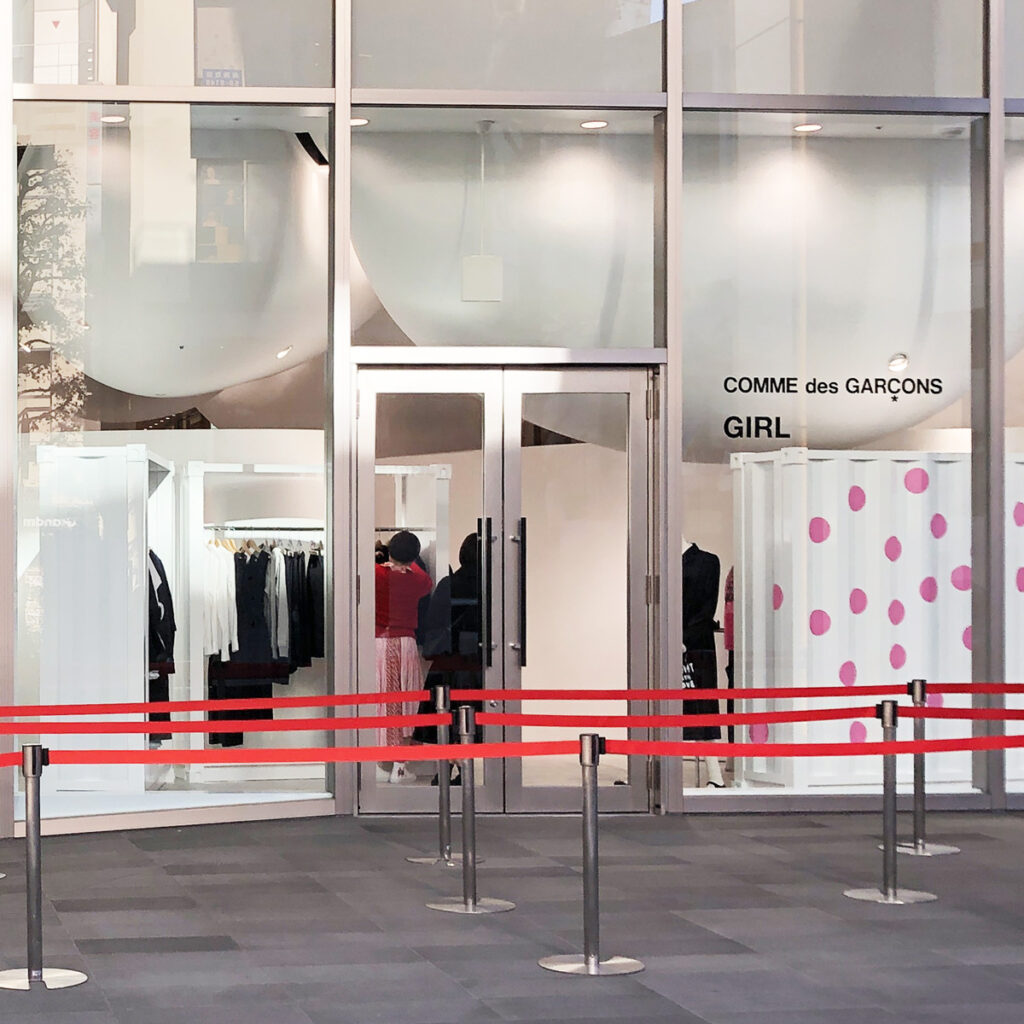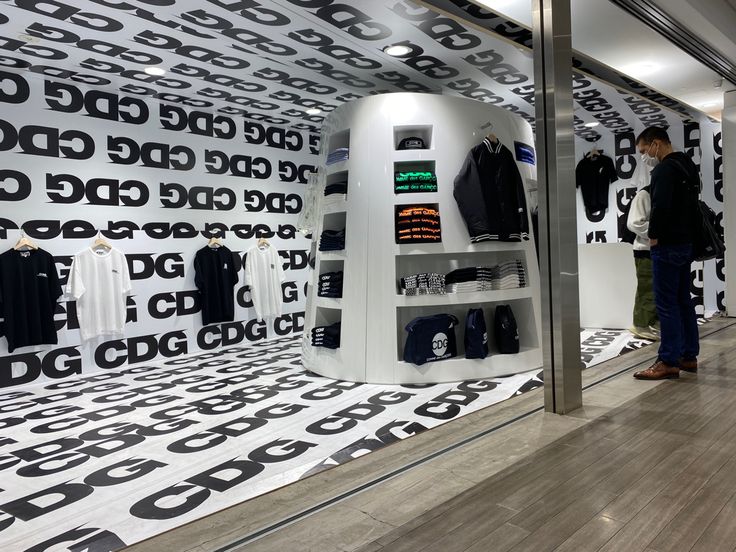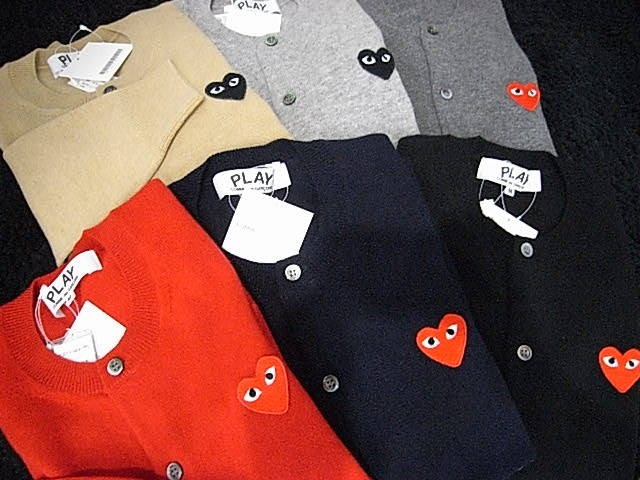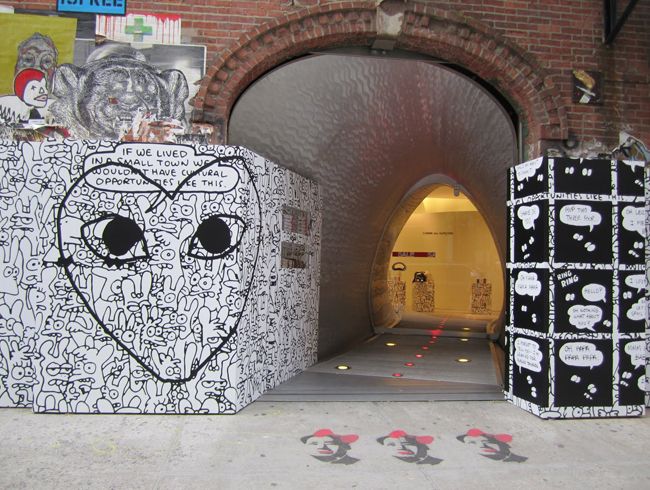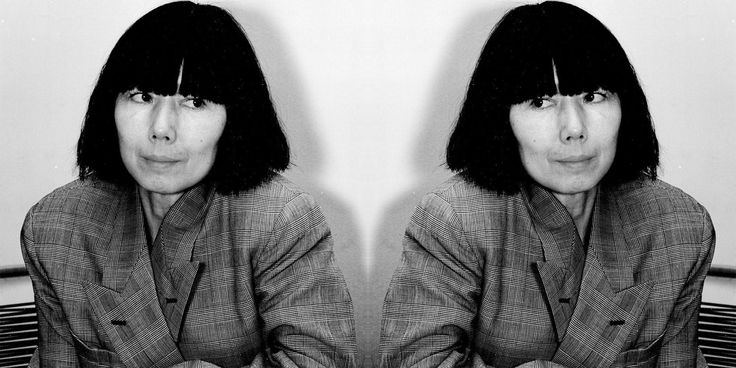In a city that thrives on contradiction, Comme des Garcons didn’t just open a store — it opened a portal.
🎞️ 1. The Sound Before the Storm
Before the influencers, before the logos, before fashion became a hashtag — there was silence.
And in that silence, Rei Kawakubo was building something strange and beautiful.
Her label, Comme des Garcons, was never designed to fit in.
Born in Tokyo in 1969, it spoke a language of distortion — sleeves cut wrong, fabrics ripped on purpose, silhouettes that bent rules until they broke.
By the time her collections hit Paris in the 1980s, fashion didn’t know what to make of her.
Critics called it “anti-fashion.” The faithful called it revolution.
But London… London understood.
🌫️ 2. The City That Breathes Contradiction
London has always been a contradiction — polished and punk, royal and rebellious.
It’s the city that taught the world how to misbehave in style.
When Kawakubo first walked its streets, she recognized the same spirit she carried inside: the need to break things beautifully.
And that recognition became something tangible — Dover Street Market, the brand’s first permanent home in the UK.
It wasn’t just a move.
It was a collision — Japan’s intellectual minimalism meets Britain’s creative chaos.
🏙️ 3. Dover Street Market: The Experiment Begins
When Dover Street Market (DSM) opened in 2004, it didn’t look like retail. It looked like rebellion.
Forget marble floors and spotless mirrors — DSM was concrete, metal, plywood, and imagination.
Each designer built their own world inside: Gucci, Raf Simons, Simone Rocha, NikeLab — all under one roof, without borders or hierarchy.
It was curated disorder — what Kawakubo called “beautiful chaos.”
“I want to create something that moves people emotionally,” she said.
“Not just something to sell.”
And people were moved — not because they understood it, but because it made them feel.
🌀 4. A Store That Never Stays Still
DSM isn’t a place. It’s a process.
Every few months, the entire store tears itself apart and starts again — a ritual called “New Beginning.”
Walls vanish, sculptures emerge, brands rearrange themselves like ideas in motion.
No two visits are ever the same.
DSM is alive — a living organism that grows, decays, and resurrects on schedule.
It’s not retail therapy.
It’s retail philosophy.
🧠 5. Comme des Garcons in the UK: The Culture Shift
Comme des Garcons in the UK wasn’t just a store opening — it was a mindset change.
Before DSM, London’s luxury scene was polished, exclusive, and predictable.
After DSM, everything became fluid. Streetwear entered galleries. Haute couture met skate culture.
You could wear a Supreme hoodie with Comme des Garcons tailoring and still be taken seriously — because DSM made it make sense.
London didn’t absorb Comme des Garcons.
Comme des Garcons absorbed London.
🖋️ 6. Where Fashion Becomes Architecture
Walk into Dover Street Market today and it still feels like stepping into a dream halfway built.
Exposed pipes, unfinished wood, sculptures that double as fitting rooms — the space feels in progress, like Kawakubo’s mind made physical.
Each floor tells a story.
Each object feels chosen, not displayed.
DSM isn’t selling fashion; it’s curating emotion.
It’s an architectural essay on imperfection — a reminder that art doesn’t need to be tidy to be true.
🍃 7. The Ritual of “New Beginning”
Twice a year, DSM performs its act of rebirth.
Nothing is sacred — installations are dismantled, walls repainted, even the flow of light is reconsidered.
It’s a spiritual process disguised as retail maintenance.
And it keeps the store — and the brand — alive.
Where most fashion houses chase permanence, Comme des Garcons thrives in impermanence.
It’s never done.
It’s always becoming.
🧩 8. The Art of Collaboration
Collaboration at DSM isn’t about hype — it’s about chemistry.
Here, Nike becomes conceptual art, Gucci experiments with absurdity, and Stussy sits beside Thom Browne like equals.
The boundaries blur until they vanish.
Every partnership is a conversation — between designers, ideas, and generations.
It’s what keeps DSM culturally fluent, always in motion, never nostalgic.
❤️ 9. Comme des Garcons Play: The Soft Rebellion
And then there’s Comme des Garcons Play — the line that turned a red heart into a global emblem.
Designed by Filip Pagowski, it’s simple, clean, and iconic — the opposite of Kawakubo’s conceptual chaos.
Yet it carries the same DNA: imperfection as identity.
Play is for everyone — a reminder that even the avant-garde can smile.
🌍 10. From London to Everywhere
What began on Dover Street now echoes across the world.
DSM has found homes in Tokyo, New York, Beijing, Los Angeles, and Singapore.
Each city reshapes it, but the soul stays the same — unpredictable, collaborative, and deeply human.
London remains the heartbeat, though.
It’s where the chaos first became beautiful.
🕊️ 11. Legacy: A Future Built on Uncertainty
Two decades on, Comme des Garcons in the UK stands as proof that imperfection can be powerful.
That ideas — not trends — are the true luxury.
In an industry obsessed with what’s next, Rei Kawakubo built something timeless by refusing to chase time at all.
“The only meaning in life is creation,” she said.
And Dover Street Market lives by those words — endlessly creating, endlessly becoming.
✨ 12. The Last Word
Fashion changes.
Trends die.
But Comme des Garcons in the UK remains — not as a brand, but as a belief.
That chaos can be beauty.
That art can be clothing.
That London, in all its contradictions, will always find room for the strange, the radical, the real.
And somewhere on Haymarket, inside the soft hum of Dover Street Market, that belief still breathes —
a quiet revolution in perfect disorder.


